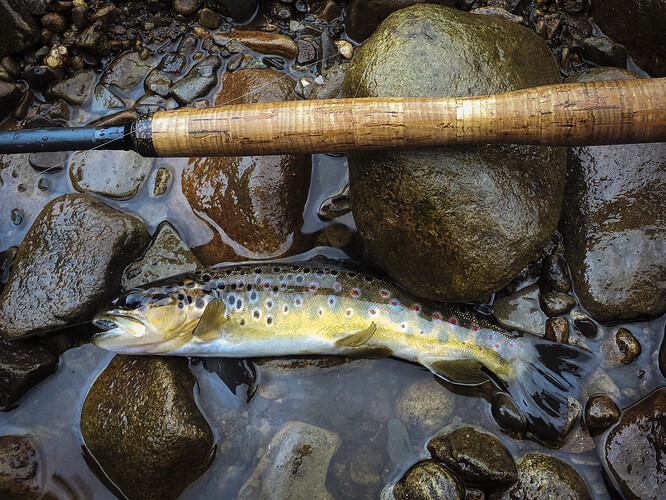@Gressak loads of strikes are missed - no doubt
My success rate - we can only judge our own progress I reckon - with nymphing has sky rocketed with tenkara rods - generally I am doing short-line contact nymphing with fairly long tippets using the end of the line as a strike indicator. I think there are many reasons for this - stealth being one, and the minimization of “cast to contact” being the another - can’t think of an easy way to say it - but your know when you cast a western rig and then all the fussing you’re doing with line management? Well of course that all disappears with tenkara and I think those vital few moments are key to detecting strikes that western anglers are missing while they’re doing all that other stuff. So for me I guess I’m still enamored of constant contact - it’s been effective for me
As to active manipulation. I feel like I can draw fish from undercuts, from under rocks, from log jams … etc… with active fly manipulation - where a dead drift nymph would not work. Not always of course - it depends on conditions - but in “prime season” when fish are fairly active - It’s become my go to fishing style.
For me the key is accurate and focused casting - I think some folks think that active techniques are just like “shot gunning” but really I have much more success when I am targeting very specific lies with very focused casts.
Not that some shot gunning doesn’t work (it can absolutely work sometimes) - but active techniques can be honed too - just like anything.
On my last Driftless trip - it’s hardly fair to speak of because the fishing is so darn good out there - I nymphed for about 5 days - and had very good success - the streams are just loaded with fish - and a half way competent angler in the prime season (if water isn’t crystal clear) can do well out there
But on the last day i was sick of nymphing and switched to active fishing with wet flies - the best fishes of the trip came to hand - and in a much more relaxed fishing style. Its a lesson that I have to keep re-learning !
I’m a live and let live angler - don’t care how anybody fishes - and in fact I really would rather see variety than uniformity in fishing styles
So I have to admit i resisted active techniques when taking up tenkara - but my experiences of the last few years have turned my into an active fly guy (but I still love nymphing too when it’s what fish want)
I’ve done it a bit of keiryu style in big water and the drifts that you can get with a 2-lb test line (and no other line at all) well they are pretty amazing - almost like center pinning - but you absolutely need indicators
